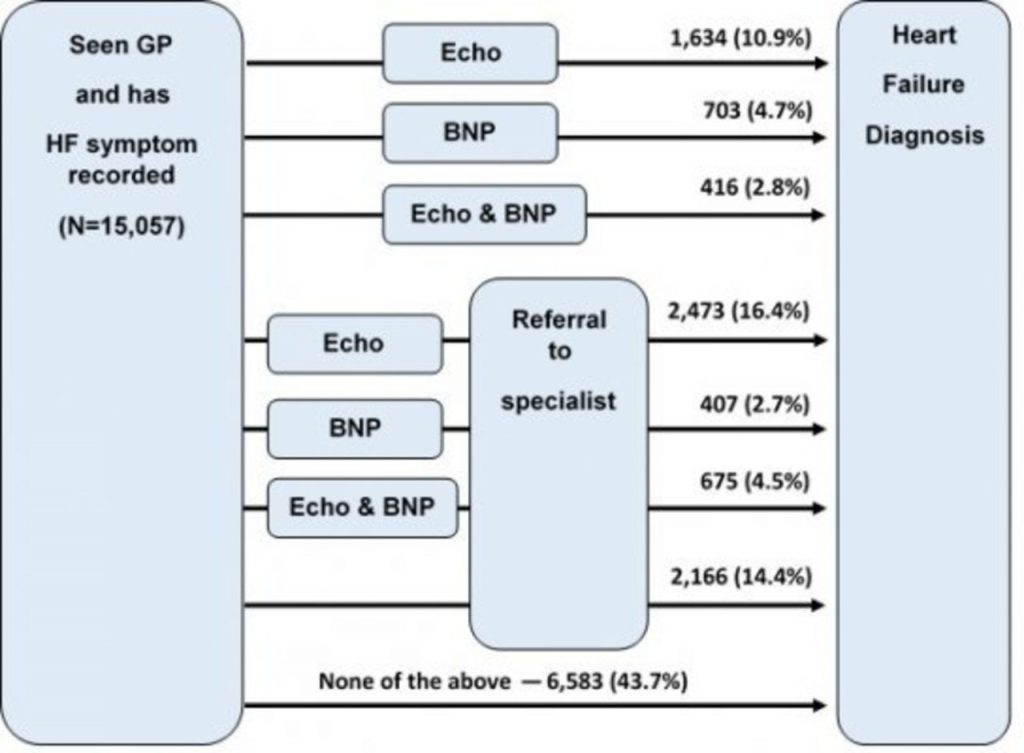
Timely diagnosis and management of heart failure (HF) is critical, but identification of patients with suspected HF can be challenging, especially in primary care where patients can present with a range of symptoms of varying severity. In a paper published in the journal Heart, we describe the journey of people with HF in primary care from presentation through to diagnosis and initial management.
We used the Clinical Practice Research Datalink (primary care consultations linked to hospital admissions data and national death registrations for patients registered with participating primary care practices in England) to describe investigation and referral pathways followed by patients from first presentation with relevant symptoms to HF diagnosis, particularly alignment with recommendations of the National Institute for Health and Care Excellence guideline for HF diagnosis.
36 748 patients had a diagnosis of HF recorded that met the inclusion criteria between 1 January 2010 and 31 March 2013. For 29 113 (79.2%) patients, this was first recorded in hospital. In the 5 years before diagnosis, 15 057 patients (41.0%) had a primary care consultation with one of three key HF symptoms recorded, 17 724 (48.2%) attended for another reason and 3967 (10.8%) did not see their general practitioner. Only 24% of those with recorded HF symptoms followed a pathway aligned with guidelines (echocardiogram and/or serum natriuretic peptide test and specialist referral), while 44% had no echocardiogram, natriuretic peptide test or referral.
We concluded that patients follow various pathways to the diagnosis of HF. However, few appear to follow a pathway supported by guidelines for investigation and referral. Although there are likely to be missed opportunities for earlier HF diagnosis in primary care, it is also the case that it can be difficult to condense the management of conditions that present in complex ways in primary care using simple linear guidelines.